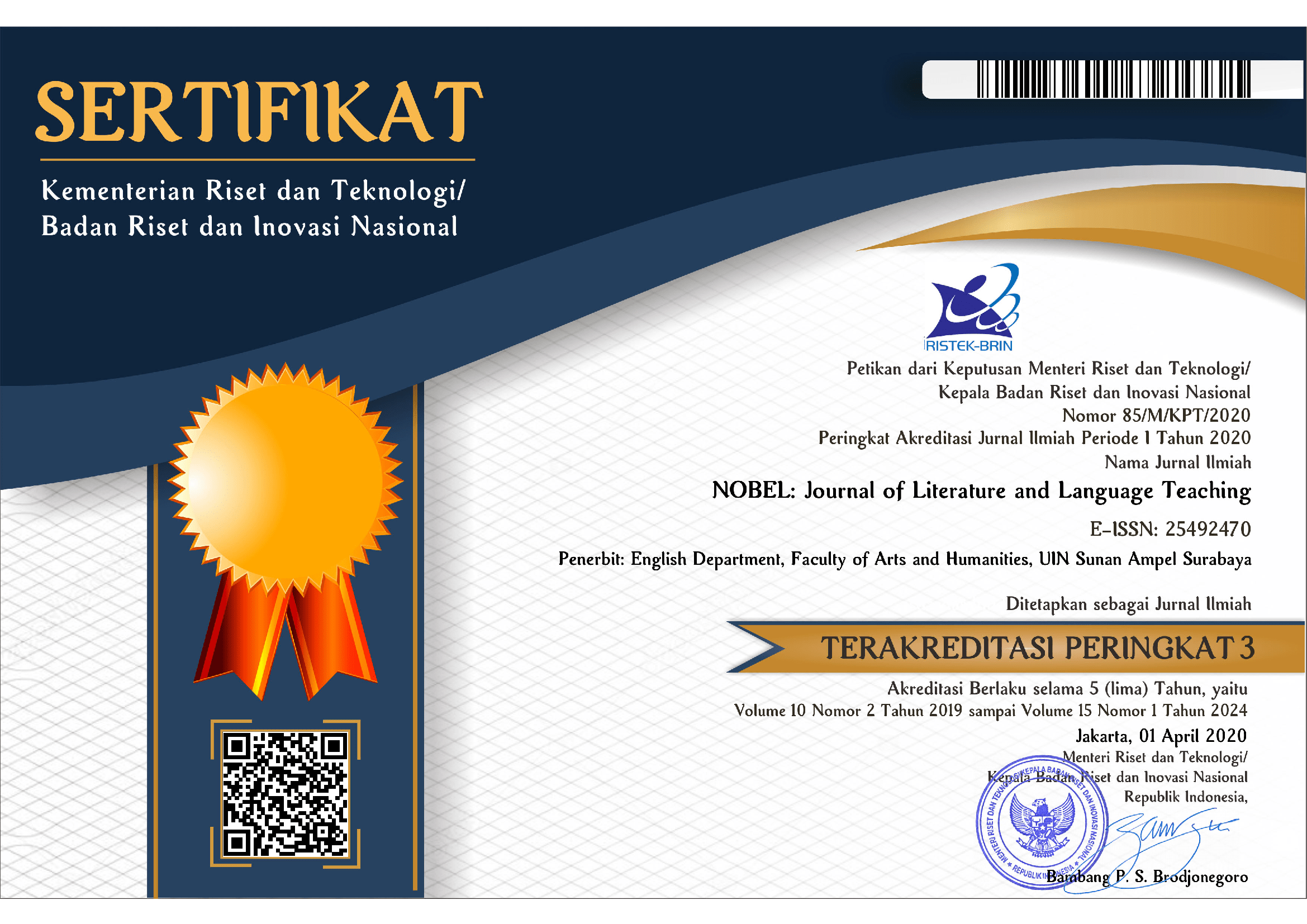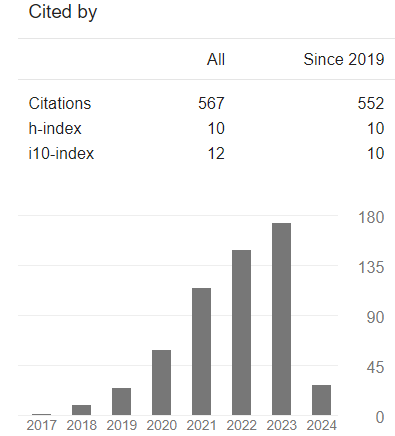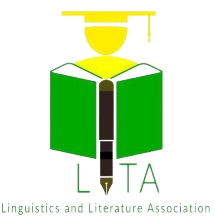An Investigation of Macrostructure, Superstructure, and Microstructure on Online News Text
DOI:
https://doi.org/10.15642/NOBEL.2020.11.2.149-161Keywords:
critical discourse analysis; linguistics; relocating of the capital city; tempo.comAbstract
This study aimed to analyze the structure of the text in the news texts of tempo.com entitled “Tolak Relokasi Ibu Kota,” published in 2019, in which it highlighted the government’s plan to relocate the capital city of Indonesia. The descriptive qualitative model was used by adapting van Dijk’s approach. The data were analyzed only in terms of the structure of text on online media tempo.com and with the orientation of the descriptive-analytic method. The data of this study were presented qualitatively. The results showed that the journalists of tempo.com media built public opinion in the news negatively. The journalists utilized selected diction, cause-effect organization, and selected speaker’s indirect quotations to produce news texts. Besides, the news was considered in harmony with its mission of providing a multimedia product independent and free from all pressures. The readers were led to a negative image of the government on tempo.com as an active and existent media in voicing justice.
Downloads
References
Assidik, G. K., & Santoso, B. W. J. (2016). Citra publik Presiden Republik Indonesia pada pemberitaan di Harian Suara Merdeka, Tabloid Tempo, dan Harian Republika: Kajian analisis wacana kritis model Norman Fairclough. Seloka : Jurnal Pendidikan Bahasa Dan Sastra Indonesia, 5(2), 201–215.
Eriyanto. (2001). Analisis wacana: Pengantar analisis teks media. Yogyakarta : LKiS.
Fairclough, N. (1995a). Critical discourse analysis: The critical study of language. Longman.
Fairclough, N. (1995b). Media discourse. Edward Arnold.
Fathan, D. (2018). Analisis wacana kritis berita “kematian terduga teroris Siyono” di Harian Solopos. Al-Balagh: Jurnal Dakwah Dan Komunikasi, 3(1), 45–72.
Fitriana, R. A., Gani, E., & Ramadhan, S. (2019). Analisis wacana kritis berita online kasus penipuan travel umrah (model Teun a. Van Dijk). BASINDO : Jurnal Kajian Bahasa, Sastra Indonesia, Dan Pembelajarannya, 3(1), 44–54.
Hasanah, U., Alek, A., & Hidayat, D. (2019). A critical discourse analysis of Kim Namjoon’s (RM’S) speech. Jurnal Humaniora Teknologi, 5(2), 16–26.
Helfer, L. (2016). Media effects on politicians: An individual-level political agenda-setting experiment. The International Journal of Press/Politics, 21(2), 233–252.
Hidayah, S. A., & Hidayat, D. N. (2019). An analysis of Russell Peters’ humor discourse of stand-up comedy about Indian Doctors on YouTube. The 5 The International Conference on Education in Muslim Society (ICEMS), 118–124.
Kendall, G. (2007). What is critical discourse analysis? Ruth Wodak in conversation with Gavin Kendall. Forum Qualitative Sozialforschung / Forum: Qualitative Social Research, 8(2), 29.
Leeuwen, T. V. (2008). Discourse and practice: New tools for critical discourse analysis. Oxford University Press.
Martono, M., & Mulyani, S. (2018). Critical discourse analysis towards authority ideology “case of mega corruption E-KTP (electronic ID card)” in Tempo magazine. JETL (Journal of Education, Teaching and Learning), 3(1), 1–8.
Mills, S. (1992). Knowing your place: A Marxist feminist stylistic analysis. Routledge.
Nuraeni, R. (2017). Peran media sosial dalam tugas jurnalistik. Jurnal Ilmiah LISKI (Lingkar Studi Komunikasi), 3(1), 43–58.
O’Connor, H., & Gibson, N. (2017). Step-by-step guide to qualitative data analysis. Pimatiziwin: A Journal of Aboriginal and Indigenous Community Health, 1(1), 64–90.
Putra, H. P., & Triyono, S. (2018). Critical discourse analysis on Kompas.com news: “Gerakan #2019Gantipresiden.” LEKSEMA: Jurnal Bahasa Dan Sastra, 3(2), 113. https://doi.org/10.22515/ljbs.v3i2.1412
Rahzanie, R. D., & Rustono, R. (2019). The representation of media power in editorial languages on Pikiran Rakyat daily newspaper. Seloka: Jurnal Pendidikan Bahasa Dan Sastra Indonesia, 8(2), 39–47.
Setiawan, I. (2016). Morfem Suprasegmental pada teks pidato pengunduran diri Prabowo-Hatta dalam Pilpres tahun 2014: Sebuah tinjauan fonologis. Jurnal Aksara, 28(1), 61–76.
Supriyadi, S., & Zulaeha, I. (2017). Dimensi ekonomi, politik, dan ideologi pada artikel-artikel di media massa cetak Jawa Pos dalam perspektif analisis wacana kritis abstrak. Seloka : Jurnal Pendidikan Bahasa Dan Sastra Indonesia, 6(1), 1–14.
Todo, M. F. L., & Budiarta, I. W. (2018). Critical discourse analysis on Kompas daily newspaper report on profiteering through the names of President Jokowi and Vice President Jusuf Kalla. RETORIKA: Jurnal Ilmu Bahasa, 4(1), 26-37.
van Dijk, T. A. (2008). Discourse and context: A sociocognitive approach. Cambridge University Press.







